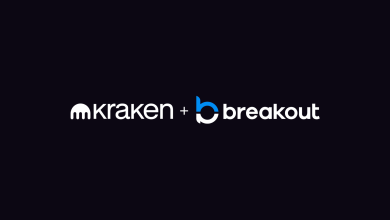iSAM Securities Unveils “Surge” to Automate A/B-Book Strategy and Execution


iSAM Securities has announced the launch of Surge, an intelligent book and execution optimisation platform that enhances the group’s existing risk management system, Radar. Positioned as a first-of-its-kind answer, Surge adds advanced analytics and decisioning to inform automation across A- and B-book optimisation and execution. The goal is to convert fragmented, manual workflows into a unified, rules-driven engine that continuously adapts to market conditions and broker-defined risk policies.
Surge is designed to sit natively alongside Radar, ingesting the identical operational data while introducing deeper analytical models and automated playbooks. Where Radar provides the backbone for risk visibility and operational control, Surge introduces intelligent layers that can classify client flows, evaluate liquidity providers (LPs) by strategy and regime, and trigger systematic hedging and routing adjustments in real time. The result is an integrated stack that aligns oversight with action so risk teams can intervene less and outperform more.
Framed as a practical answer to industry pain points, Surge targets the costly inefficiencies of human-in-the-loop processes that dominate many brokerage operations. By making execution policy programmable—yet fully auditable—brokers can evolve from reactive risk firefighting to proactive, repeatable performance management. This shift is especially relevant for desks covering multiple time zones, where workloads intensify and manual errors tend to cluster.
LP Analytics, Client Classification, and Book Switching—Built for Brokers’ Daily Reality
LP Analytics is at the heart of Surge’s intelligence layer. Brokers gain granular visibility into LP behaviour across strategies and market states, evaluating competitiveness of spreads, fill quality, slippage attribution, and quote dynamics. Instead of relying on periodic, manual scorecards, teams can continuously compare LPs on a like-for-like basis, spotlighting where performance deteriorates and where routing adjustments can tighten execution outcomes. This persistent benchmarking makes LP management an iterative process rather than an occasional, backward-looking exercise.
Client Classification translates risk models into expert routing rules that can be applied automatically through the broker’s bridge. Surge allows brokers to define user-specific taxonomies—by behaviour, volatility contribution, or profitability profile—and then propagate these rules into live execution pathways. As client characteristics evolve, the system updates classifications without waiting for quarterly reviews or spreadsheet reconciliation, reducing latency between and ensuring that book composition reflects current, not historic, risk.
Book Switching Automation converts hedging intent into deterministic, rule-based execution. Brokers can pre-set parameters for exposure offsets, trigger events, and routing logic that systematically manage positions in real time. Rather than waiting for operators to spot a threshold breach or call for a switch, Surge can offset exposure, rebalance across LPs, and adjust routes to capture spread revenue while keeping within risk tolerances. Risk managers retain full control over the ruleset and can override at any time, but day-to-day execution becomes quicker, more consistent, and less error-prone.
Designed to Remove Friction, Reduce Errors, and Free Teams to Pursue P&L
Industry feedback has consistently highlighted the drag from manual processes, limited information access, and late detection of risk events—especially on overnight desks. Surge is explicitly engineered to address those realities. By consolidating analytics and automations into a single workflow, it shortens the path from signal to hedge, and from variance detection to LP reallocation. That compression of cycle time is what enables the platform to deliver both operational resilience and a measurable lift in execution quality across the book.
“From speaking with our broker clients, friends in the industry — and drawing on my personal experience on the desk — it’s clear that the manual inefficiencies of daily workflows and limited access to information are a significant resource and financial drain for brokers. Even strong teams make mistakes and catch certain risk events too late. While these incidents may not heavily impact main offices, overnight desks face additional pressure,” said Apex. His perspective underscores why embedding intelligence into the workflow matters: it reduces reliance on perfect vigilance while upgrading baseline performance.
Weissert added:
“Surge so firms can capture spread revenue with far less manual intervention — giving risk managers peace of mind and providing teams the freedom to pursue new avenues for profit.”
With Surge and Radar working in tandem, iSAM Securities is pitching a path to higher-quality execution under tighter control—where data informs policy, policy drives automation, and automation compounds results over time.
Takeaway







